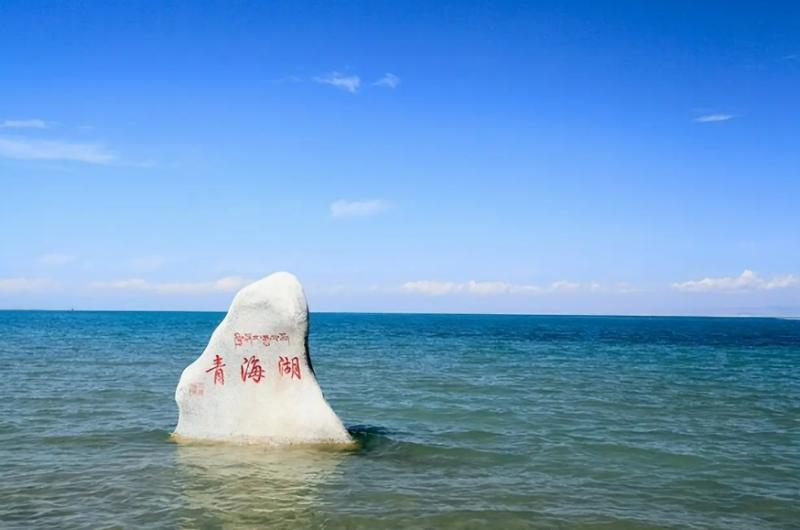Qinghai Lake

The Yellow River: Cradle of Qinghai Lake
The Yellow River, the mother river of the Chinese nation, has nurtured Chinese civilization and nourished this vast land. At the headwaters of the Yellow River lies China's largest inland saltwater lake – Qinghai Lake.
I. Qinghai Lake, the Source of the Yellow River
Located in the northeastern part of the Qinghai-Tibet Plateau, Qinghai Lake sits at an elevation of 3196 meters and covers an area of approximately 4500 square kilometers, making it the world's largest plateau inland saltwater lake. The Yellow River, originating from the Bayan Har Mountains on the Qinghai-Tibet Plateau, flows through Qinghai Lake and into the Yellow River, becoming a significant source of water for the river.
1. The Formation of Qinghai Lake and its Relationship with the Yellow River
Qinghai Lake's formation is closely intertwined with the Yellow River. Millions of years ago, the uplift of the Qinghai-Tibet Plateau led to active tectonic movements, forming numerous fault depressions. The basin where Qinghai Lake lies, influenced by geological structures, formed a massive lake. Over millions of years, the headwaters of the Yellow River, through continuous erosion, deposited vast amounts of sediment in the basin, eventually shaping the Qinghai Lake we see today.
2. The Influence of Qinghai Lake on the Yellow River's Hydrology
Qinghai Lake is a vital water source for the Yellow River, and changes in its water level directly affect the water supply downstream. During the rainy season, Qinghai Lake receives abundant water, supplying the Yellow River with significant replenishment. Conversely, in the dry season, Qinghai Lake's water level drops, reducing its contribution to the Yellow River. Consequently, variations in Qinghai Lake's water level significantly impact the ecological environment and economic development of the Yellow River basin.
3. The Importance of Protecting the Ecological Environment of Qinghai Lake for the Yellow River
Qinghai Lake is not only a crucial water source for the Yellow River but also a significant ecological barrier in China. In recent years, Qinghai Lake has faced challenges such as declining water levels, deteriorating water quality, and ecological damage. These issues threaten not only the lake's ecological environment but also the health of the Yellow River. Therefore, protecting the ecological environment of Qinghai Lake is crucial for maintaining the ecological safety of the Yellow River and promoting sustainable development in the Yellow River basin.
II. The Yellow River, the Nurturing Source of Qinghai Lake
The Yellow River is not only a vital water source for Qinghai Lake but also a significant part of its ecosystem.
1. The Yellow River Brings Abundant Nutrients to Qinghai Lake
The headwaters of the Yellow River, flowing from the Bayan Har Mountains, carry vast quantities of sediment, minerals, and organic matter. When these substances enter Qinghai Lake, they provide abundant nutrients for the lake's ecosystem, promoting the growth and reproduction of its organisms.
2. The Impact of the Yellow River on Qinghai Lake's Hydrology
The inflow of the Yellow River into Qinghai Lake not only provides water but also influences the lake's hydrological conditions. The river's flow effectively regulates the lake's water level, preventing it from drying up. Moreover, the inflow improves the lake's water quality and enhances its self-purification capacity.
3. The Ecological Impact of the Yellow River on the Surrounding Area of Qinghai Lake
The Yellow River irrigates vast areas surrounding Qinghai Lake, providing a crucial water source for agriculture in the region. Additionally, the river brings abundant ecological resources to the surrounding areas, promoting the improvement of the local ecological environment and the conservation of biodiversity.
III. The Yellow River and Qinghai Lake: A Harmonious Symbiosis
The Yellow River and Qinghai Lake, interdependent and mutually influential, form a unique ecosystem that maintains the ecological balance of the Qinghai-Tibet Plateau.
1. Interdependence of the Ecosystem
The Yellow River supplies water to Qinghai Lake, while Qinghai Lake serves as an important reservoir for the Yellow River. Their interdependence forms a complete ecosystem. The inflow of the Yellow River provides essential water to Qinghai Lake and brings abundant nutrients for the lake's ecosystem. Conversely, the ecosystem of Qinghai Lake plays a vital role in purifying and regulating the flow of the Yellow River.
2. Shared Responsibility for Ecological Protection
Protecting the ecological environment of the Yellow River and Qinghai Lake is an essential task for maintaining the ecological balance of the Qinghai-Tibet Plateau. We need to work together to strengthen ecological protection efforts in the Yellow River basin and Qinghai Lake, prevent pollution, restore ecosystems, promote harmonious coexistence between humans and nature, and build a beautiful China.
3. Future Direction
In the future, we must continue to strengthen ecological protection and scientific research concerning the Yellow River and Qinghai Lake, exploring new paths for harmonious coexistence between humans and nature. We aim to create a healthier and more stable ecosystem for the Yellow River and Qinghai Lake, leaving a valuable ecological legacy for future generations.